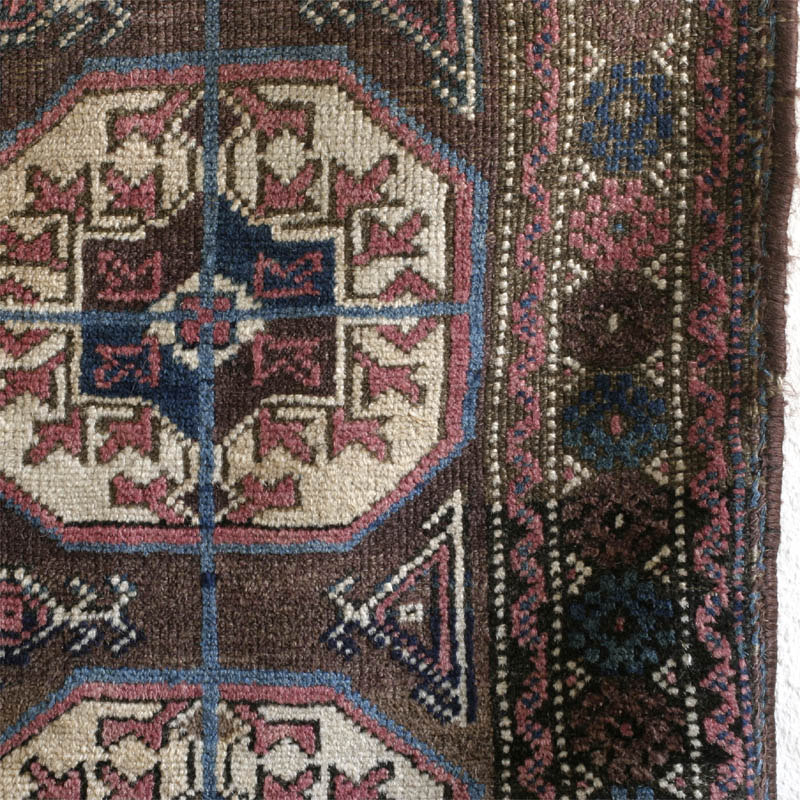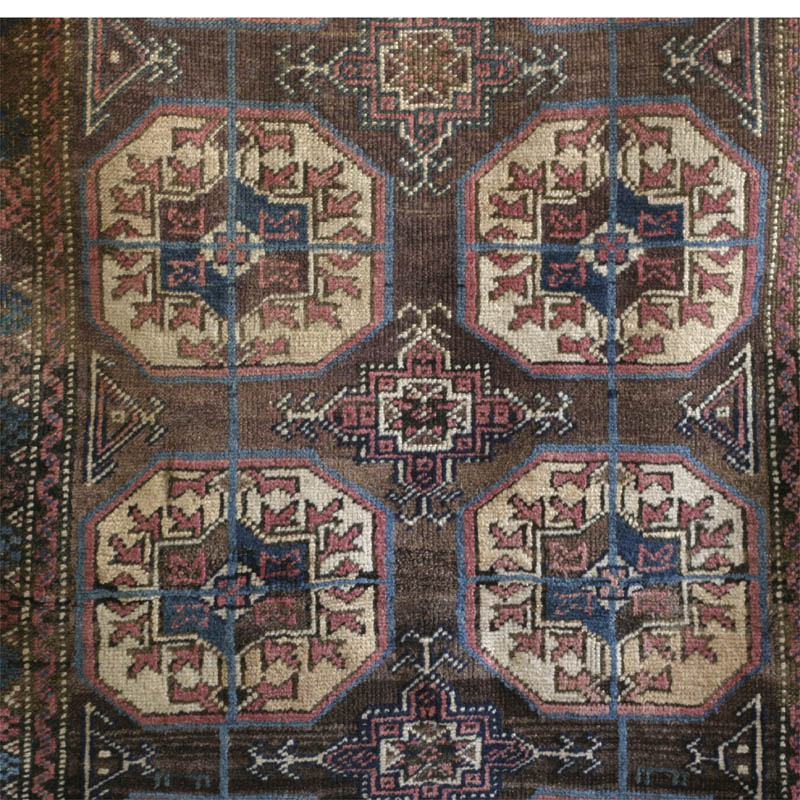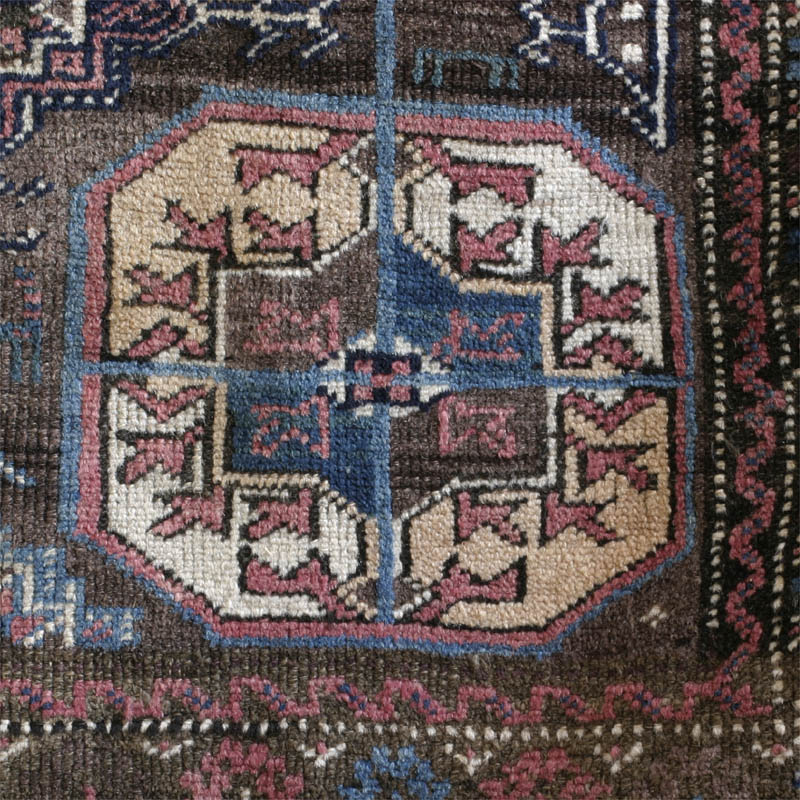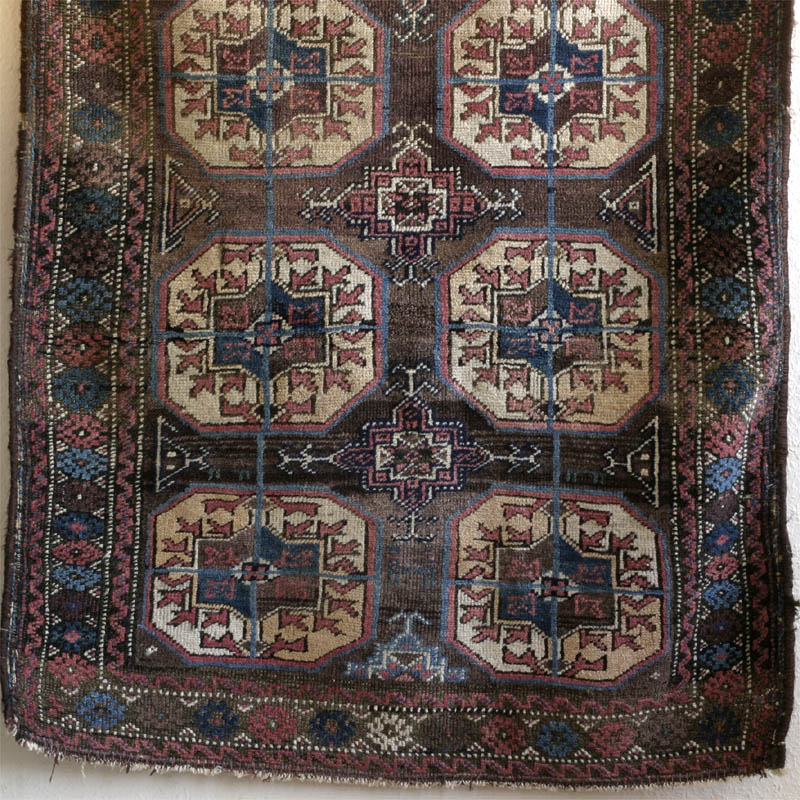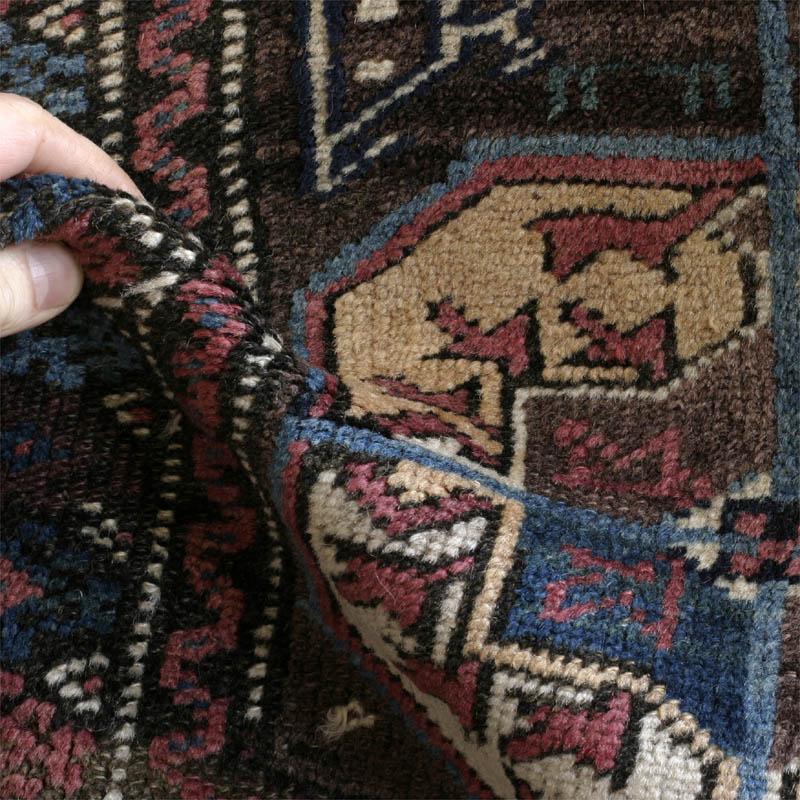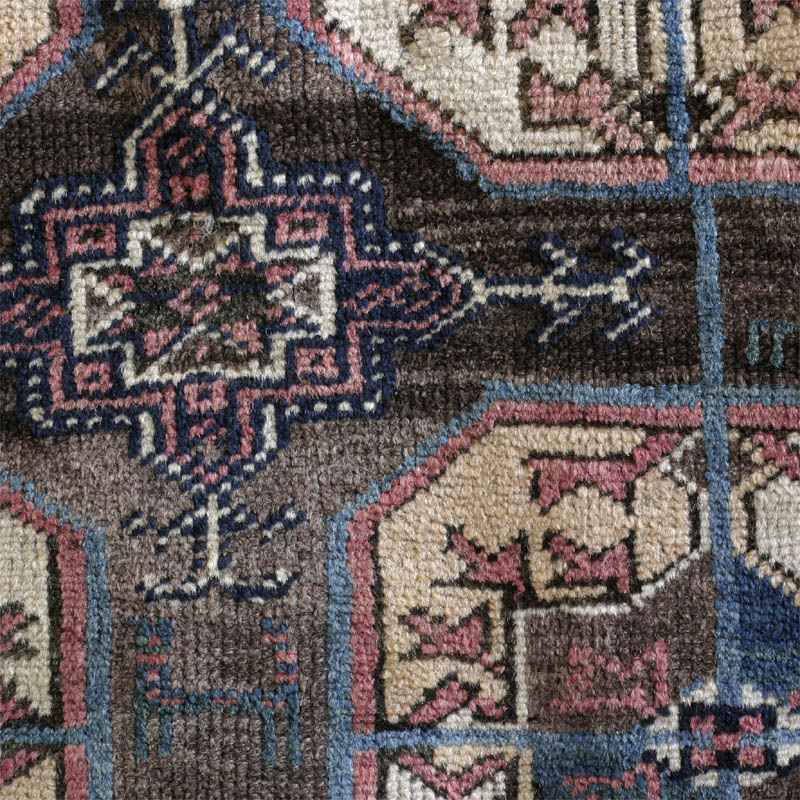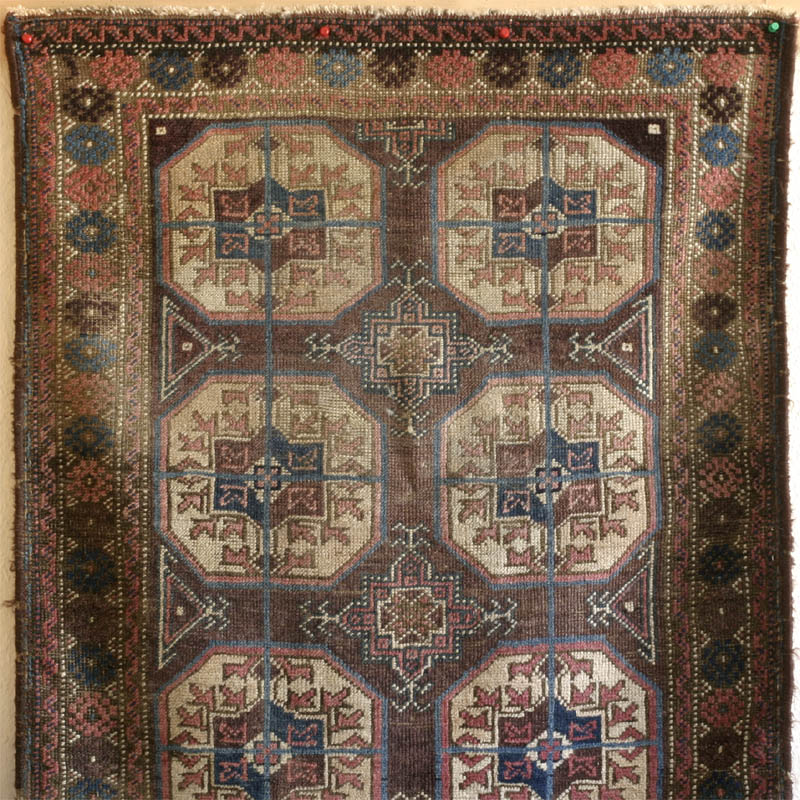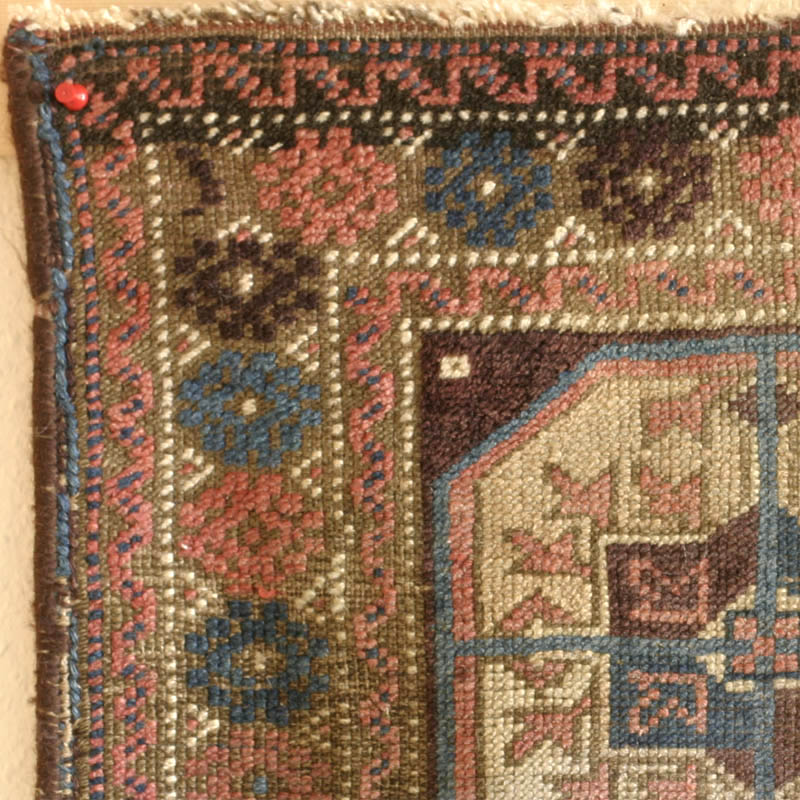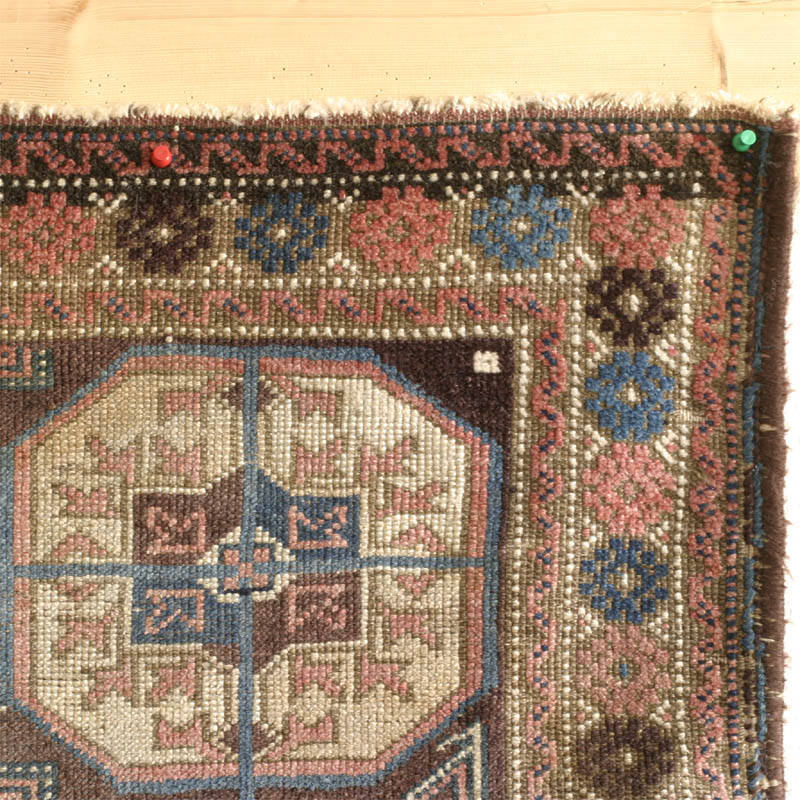The design of this unusually light Baluch rug borrows a variant of the Turkmen Tekke main gul and a variant of a Tekke secondary gul. This rug can be considered collectable already for its unusual palette of abrashed browns, light peach, rose and powder blue shades.
The field is filled by 5 quartered guls arranged on blue vertical lines (horizontally, these lines are not extended beyong the guls). The bottom shows a 'false start' where after completion of the first pair of guls, the vertical lines are offset towards the centre by two knots each.
The inner border has a geometric reciprocal meander which repeats the checkered diamond motive. It is framed by two narrow barberpole borders in green and red. The outer narrow border has diamonds on white ground rectangles alternating with those on red and aubergine ground.
The rug measures 4 ft. x 2ft.9in. (152 x 84 cm). A medium fine non-depressed weave, 9.v,7.h = 63 kpsi, with symmetric knots (rare for Baluchi rugs). The warps are z-spun s-plied off-white and wool, some with light brown threads; two weft shoots of thin brown wool in various shades. The handle is very pliable, leathery towards the top where the pile is very short, meatier towards the bottom. Nice soft wool, no holes, tears, stains,of course no bleeding. The selvages are strange. originally probably four cord of which the inner two cords are wrapped in bands of alternating blue and brown, the outer two have been wrapped together in dark red-brown wool, probably not original. may be this was done as a simple way to contain some unraveling of the outer selvage areas at some point.
Some corner rounding at the bottom end. Both ends have very narrow remnants of brown flat-woven kilim ends. Both are secured by stitching which is slightly loose at a few points and should be checked. The pile is lower at the top (more wear in the top central area where knotes are down to knot heads), fuller towards the bottom. The light olive brown shows slight corrosion in places but the rug is nowhere bare apart from very few and small isolated spots near the border.
The palette is light and at the same time pastel-like and muted, through the use of not saturated dyes. There is nowhere a strong red—the darkest shade of red is a medium rose (madder-based). The gul quartered backgrounds use a pale yellow close to off-white, and a light apricot. There is a nice powdery indigo blue and a darker shade of indigo. The brown of the field shows a lot of variation both in terms of abrash and in terms of different types of brown being used—browns rinclude a light olive brown, grey-brown, dark maroon and aubergine-brown, and many shades in between. The dyes are likely to be natural colours, I am a bit uncertain about the maroon of the ground.
